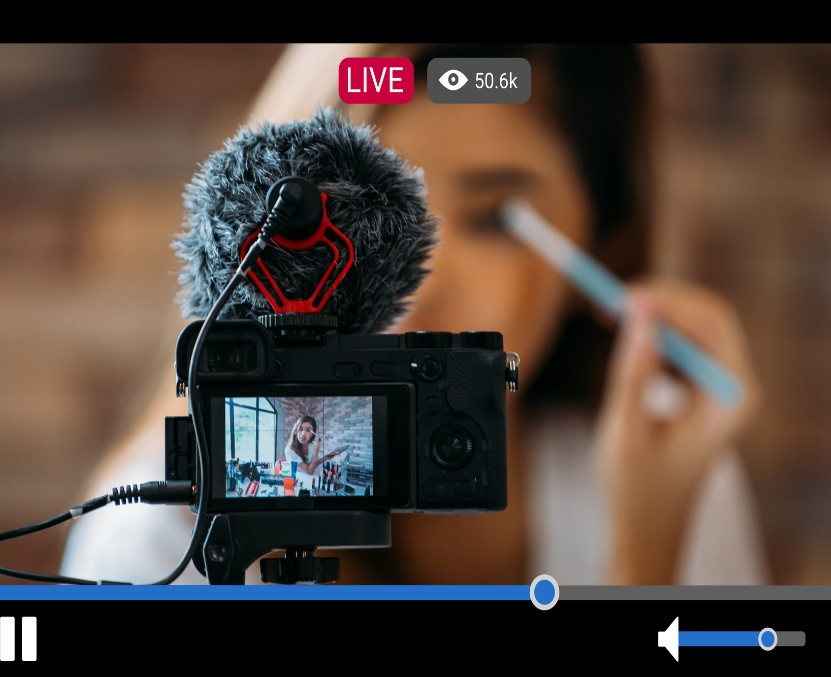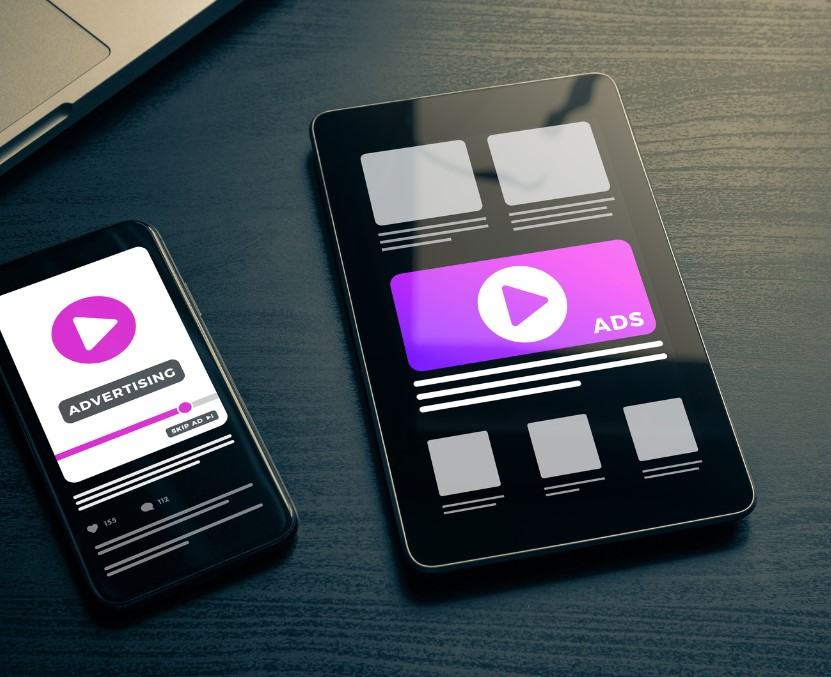OLV Advertising is a dynamic and innovative approach that has overtaken the advertising industry. If you’re wondering what OLV Advertising is and how it can revolutionize your advertising campaigns, you’ve come to the right place.
In this article, we’ll delve deep into the concept of OLV Advertising, dissecting its core principles and uncovering the strategies that can catapult your ads to new heights. From understanding the fundamentals to implementing advanced techniques, we’ll guide you through the process of harnessing the power of OLV Advertising to ensure your brand stands out in the crowded digital landscape.
Get ready to unlock the secrets of this cutting-edge advertising methodology and learn how to skyrocket your ads to unprecedented levels of success.
Read More: Pay Per Install: The Good & The Bad Of This Pricing Model
What Does OLV Stand For in Advertising?
OLV in advertising stands for “Online Video Advertising.” In the ever-evolving world of digital marketing, Online Video Advertising has emerged as a potent and influential tool for brands and businesses to connect with their target audience. OLV involves creating and disseminating video content through various online platforms and channels, such as social media, websites, streaming services, and more.
Online video ads have gained prominence due to their ability to captivate audiences with engaging visuals, storytelling, and audiovisual elements. It allows brands to convey their messages in a compelling and memorable way, making it an effective means to increase brand awareness, drive traffic, and boost conversions.
Online Video Advertising has become indispensable to modern advertising strategies as consumers increasingly use online platforms for content consumption.
Its versatility, targeting options, and ability to convey complex messages concisely make it a valuable asset for businesses looking to establish a strong online presence and connect with their audience meaningfully.

Are OTT and OLV The Same?
OTT advertising (Over-the-Top) and OLV (Online Video Advertising) are unrelated but different. OTT ads are the content delivery method of streaming TV ads over the internet, bypassing traditional cable or satellite TV. It differs from tv advertising because it includes platforms like Netflix, Hulu, and Amazon Prime Video. OLV, on the other hand, specifically focuses on the advertising aspect within OTT and online video platforms.
What Is The Exact Difference Between OLV Advertising And OTT Advertising?
OLV involves creating and delivering online videos (olv ads) through digital channels like YouTube, social media, or streaming services. While both OTT and OLV operate in the digital advertising video realm, OTT focuses on content delivery and resembles traditional TV commercials, while OLV pertains to the advertising strategies within this digital ecosystem.

What Is OLV Advertising vs. CTV Advertising?
OLV Advertising (Online Video Advertising) and CTV Advertising (Connected TV Advertising) are two distinct but closely related concepts within the realm of digital advertising.
OLV Advertising primarily involves using video ads on online platforms like social media, websites, and video-sharing platforms like YouTube. These ads can take various formats, including pre-roll ads before a video, mid-roll ads during a video, or standalone video ads. OLV ads are typically viewed on personal devices like smartphones, tablets, or computers. They offer a broad reach, targeting various online audiences based on user behavior, demographics, and interests. OLV Advertising is known for its versatility and ability to engage viewers with visually compelling content.
On the other hand, CTV Advertising focuses on delivering video ads through internet-connected television devices like smart TVs, streaming platforms (e.g., Netflix, Hulu), and digital set-top boxes (e.g., Roku, Amazon Fire TV). CTV ads provide a more traditional TV-like experience and are often shown during ad-supported streaming content. They offer a lean-back viewing experience and can target audiences in their living rooms. CTV Advertising is prized for its ability to reach cord-cutters and viewers who have shifted away from traditional cable TV.
In summary, OLV Advertising centers on video ads delivered online, while CTV Advertising targets viewers on internet-connected television devices. Both strategies harness the power of video to engage audiences, but they differ in their viewing contexts and reach, making it essential for advertisers to choose the approach that aligns best with their campaign objectives and target demographics.
Read more: AppsFlyer Pricing In 2023 & How to Get a Free 2-Month Trial
Why Online Video Ads Should Be Included In Your Ad Spend
- High Engagement: Video content tends to be more engaging than static images or text-based ads. Videos can convey emotions, tell stories, and capture viewers’ attention more effectively, leading to higher engagement rates.
- Widespread Usage: People are increasingly consuming video content online. Whether through social media platforms, streaming services, or websites, video has become a central part of the online experience. By investing in online video ads, you can reach a large and diverse audience.
- Improved Brand Awareness: Video ads are an effective tool for building brand awareness. They allow you to showcase your products or services in a dynamic and memorable way, helping viewers remember your brand and message.
- Targeting Options: Online platforms offer sophisticated targeting options, allowing you to reach specific demographics, interests, and behaviors. This ensures that your video ads are shown to the most relevant audience, increasing the chances of conversions.
- Measurable Results: Online video ads are highly trackable. You can measure key performance metrics such as views, click-through rates, conversions, and more. This data allows you to refine your ad campaigns for better results and a higher return on investment (ROI).
Top Tips For Your Online Video Advertising Campaigns
Hook the user in the first seconds
Hooking the user in the first seconds is paramount for online video ads because attention spans are notoriously short in the digital age. In a world inundated with content, viewers have countless options at their fingertips, and their decision to engage or scroll past an ad is made swiftly.
Advertisers must employ compelling visuals, concise messaging, and a clear value proposition within the opening seconds to captivate their interest.
This can involve a captivating story, humor, or a striking visual designed to pique curiosity and entice viewers to stay engaged. Those initial moments set the tone and determine whether an ad succeeds in conveying its message to a receptive audience or becomes just another skipped interruption in the online experience.
Read More: Our 11 Top Picks Of Free Apps That Pay Real Money Instantly
Create online video content focused on helping, not selling
Creating online video content focused on helping rather than selling is highly effective because it builds trust and fosters a genuine connection with the audience.
When viewers perceive that the primary goal is to provide valuable information, solve problems, or offer insights, they are more likely to engage with the content and view the creator as an authority or a source of reliable information.
This approach nurtures a loyal and appreciative audience, which can eventually lead to brand loyalty and organic referrals.
By prioritizing assistance and education over direct sales pitches, businesses can establish themselves as a valuable resource, fostering long-term relationships with customers who appreciate their commitment to their needs and interests.

Choose an engaging ad video format
Selecting an engaging ad format is essential for any digital video ad because it maximizes the ad’s impact and audience retention. Advertisers can capture viewers’ attention more effectively by choosing dynamic and interactive formats, such as in-stream ads, skippable ads, or interactive overlays.
These formats allow for creativity and storytelling, making the ad experience more enjoyable and less intrusive. Additionally, engaging formats often encourage viewers to interact with the content through quizzes, polls, or clickable links, fostering a deeper connection and potential for conversions.
Ultimately, an engaging format draws viewers in and enhances the overall ad experience, increasing the likelihood of brand recall and positive associations.
Make the online video campaigns short and to the point
Creating short and to-the-point online video campaigns is highly effective for online video advertising because it aligns with today’s audience’s fast-paced digital landscape and shorter attention spans.
With abundant content competing for viewers’ time and interest, brevity is essential. Shorter videos, typically under 30 seconds, convey the core message swiftly, reducing the risk of viewer abandonment. They also encourage viewers to engage since there’s less commitment required.
By focusing on concise storytelling and a clear call-to-action, advertisers can deliver a memorable, impactful message that resonates quickly, increasing the chances of audience retention, message comprehension, and desired actions like clicking through or making a purchase.
Focus on broad brand awareness campaigns
Focusing on broad brand awareness campaigns is effective for olv ads because it lays the foundation for long-term success for the relevant target audiences.
By reaching a wide and diverse audience, these campaigns build familiarity, trust, and recognition for a brand, making it top-of-mind when consumers make purchase decisions. They expand the customer base by capturing the attention of potential future buyers who may not be actively searching for a product or service at that moment.
Furthermore, a strong brand presence sets a business apart from competitors, and emotionally resonant ads can even go viral, amplifying brand reach. Brand awareness campaigns foster lasting connections that drive sustained growth and market leadership.
Include a CTA in your digital video
Including a clear and compelling Call to Action (CTA) in your digital video is essential for the brand and should be included in your olv strategy, because it directs viewers on what action to take next.
Whether it’s “Shop Now,” “Learn More,” “Subscribe,” or any other relevant prompt, a well-crafted CTA guides the audience’s behavior, increasing the likelihood of conversions and engagement. It transforms passive viewers into active participants, driving desired actions and measurable results.
Moreover, a strong CTA reinforces brand messaging and objectives, ensuring that the viewer’s experience is purposeful and aligned with the brand’s goals, ultimately boosting brand visibility, customer acquisition, and overall success.
Read More: What Are the 7 Best Mobile App Conferences of 2023?

Optimize your online video ads for effectiveness and ROI
Optimizing your olv campaign for effectiveness and ROI is absolutely crucial for any OLV (Online Video) campaign. Advertisers can maximize their budget’s efficiency by fine-tuning targeting, ad creativity, and placement. This optimization ensures that the right message reaches the right audience at the right time, enhancing the chances of conversions and ROI.
Regularly analyzing performance data allows for informed adjustments, making the campaign more cost-effective over time.
Effective optimization boosts immediate results and contributes to the brand’s long-term success by refining strategies, improving customer engagement, and ensuring that resources are allocated where they generate the most impact, ultimately delivering a strong return on investment.
Test and repeat
Testing and repetition are essential to an effective OLV (Online Video) strategy. Testing allows advertisers to experiment with elements such as ad formats, targeting criteria, ad copy, and creative variations.
By analyzing the results of these tests, they can identify what works best and refine their approach accordingly. Repetition, conversely, ensures consistent exposure to the target audience. It reinforces brand messaging and increases the chances of capturing the viewer’s attention, especially in a crowded digital landscape.
Combining testing and repetition leads to a more data-driven and refined OLV strategy, optimizing performance and achieving better ROI over time.

Final Thoughts
OLV advertising, or Online Video Advertising, has emerged as a dynamic and powerful tool for brands seeking to engage audiences in today’s digital age.
As we’ve explored throughout this article, understanding the intricacies of OLV is crucial for achieving success in this ever-evolving landscape. By harnessing the captivating potential of video, leveraging the vast array of ad formats, and prioritizing audience targeting and engagement, businesses can skyrocket their ads to new heights.
Moreover, optimizing strategies through testing, refining, and repetition ensures ongoing relevance and effectiveness. In a world where video content reigns supreme, embracing OLV advertising is not just an option—it’s necessary for those aiming to make a lasting impact and thrive in the competitive digital arena.






